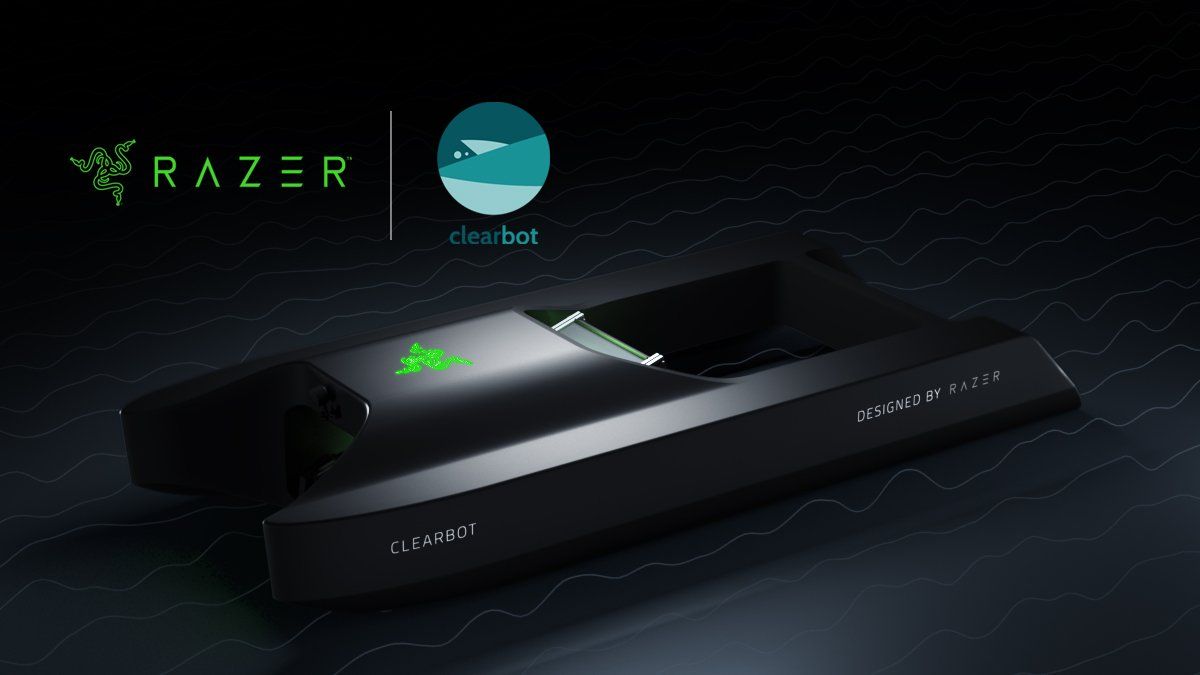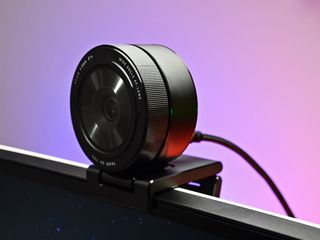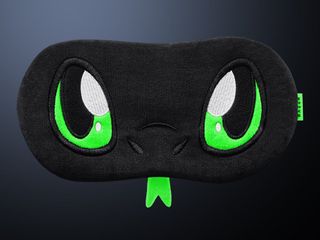How Razer and Clearbot use an AI drone to clean up ocean waste
Razer's latest sustainability efforts work with startup Clearbot to clean up the world's oceans.

What you need to know
- Razer announced a partnership with Clearbot today to help remove ocean waste.
- Clearbot is a cleaning drone that uses artificial intelligence to identify waste.
- Razer helped Clearbot make the drone industrial and scalable, and also added some Razer green lighting.
Razer announced a partnership with Clearbot today to help clean up ocean waters. The announcement comes on World Oceans Day and is part of Razer's 10-year "#GoGreenWithRazer" sustainability roadmap. Clearbot is a self-navigating drone that's solar-powered. It uses machine learning to identify waste and can store up to 250 kg of plastics in a single cleaning cycle.
I virtually sat down with Sidhant Gupta, co-founder of Clearbot, and Razer to discuss the partnership. Gupta worked in robotics for years before helping found Clearbot. After a trip to map coral reefs in the Philippines and seeing similar issues with waste in Indonesia, Gupta was struck by the magnitude of the problem.
It's literally everywhere, right? So we have an issue that is at a global level of problem. And there is an opportunity, but you can actually have a standard solution. You can build a solution that is applicable everywhere in the world, right? So why is it that we're 20 years behind on this?
Gupta also believes that people are more aware of these issues now, including Razer's leadership.
"Our mission is to have swarms of these robots autonomously, preventing waste from entering our water bodies," said Gupta of Clearbot.
A key challenge of collecting waste from water is inefficiency. Trash is often collected by hand or with fishing nets, often from boats. On a paddleboat, it can take up to four days to clean 3 km of a river. Even larger boats require a lot of time and effort to remove waste.
In contrast, Clearbot is automated and self-navigating. It uses cameras to identify waste, and in a head-to-head competition in Hong Kong in April, it outperformed a traditional waste removal setup.
Clearbot's conveyer belt can't pick up microplastics, but it will remove items larger than 9 mm and up to roughly one meter from the water.
Get the Windows Central Newsletter
All the latest news, reviews, and guides for Windows and Xbox diehards.
Gupta explained that Clearbot is quite good at identifying around 10 classes of waste at this time, including bottles, cups, and containers. It struggles at the moment with certain forms of waste, such as plastic bags. To a camera, a plastic bag can look a lot like a jellyfish, so Clearbot will use machine learning to better tell the two apart.
Jellyfish aren't the only wildlife that the makers of Clearbot had to consider. Generally, fish and other swimming creatures aren't a concern because Clearbot skims the top of the water, and its propellers make enough noise to scare away fish, but birds caused some issues early on.
We had a few other challenges. So, we had ducks, for example. Ducks don't mind if anything's around them, right? So then we trained our camera to detect ducks nearby.
Razer helped refine the design of Clearbot. The Clearbot team came up with the AI behind the cleaning drone, but Razer helped make the machine industrial and scalable.
"So I think where Razer brought in a lot of value was in the industrial design element," said Gupta. "So, we were able to then wrap our technology, right? Which is really our core advantage with Razer's expertise on industrial engineering industrial design, which is, of course, their expertise, global selling products all over the world."
Gupta added that in addition to the design being sleeker, it's more functional and reliable in the water.

Clearbot also utilizes some Razer hardware, namely the Razer Kiyo Pro webcam. Gupta explains that the Kiyo Pro is better in low-light situations than the camera they used previously.
In case you're worried about a Razer product not having lights, there is a version of Clearbot with Razer green lights that shine down in the water. Clearbot can also tweak the design going forward, such as switching away from matte black to keep temperatures down.
Clearbot is primarily aimed at working in rivers and canals, which, if left uncleaned, flow waste into the world's oceans.
The original Clearbot machine will be up and running this month, and the new design should arrive in the near future.
Going forward, the Clearbot team may expand into underwater cleanup, but it's focused on surface waste right now.

In addition to the Clearbot partnership, Razer announced another milestone for its Sneki Snek campaign to save trees. To celebrate saving 300,000 trees, Razer launched two new Sneki Snek items, an eye mask and a floor rug. Once the campaign saves 400,000 trees, Razer promises to launch Sneki Snek slippers.
You can read more about the Sneki Snek campaign and Razer's other sustainability efforts in our interview with Razer chief of staff, Patricia Liu.

Sean Endicott is a tech journalist at Windows Central, specializing in Windows, Microsoft software, AI, and PCs. He's covered major launches, from Windows 10 and 11 to the rise of AI tools like ChatGPT. Sean's journey began with the Lumia 740, leading to strong ties with app developers. Outside writing, he coaches American football, utilizing Microsoft services to manage his team. He studied broadcast journalism at Nottingham Trent University and is active on X @SeanEndicott_ and Threads @sean_endicott_.